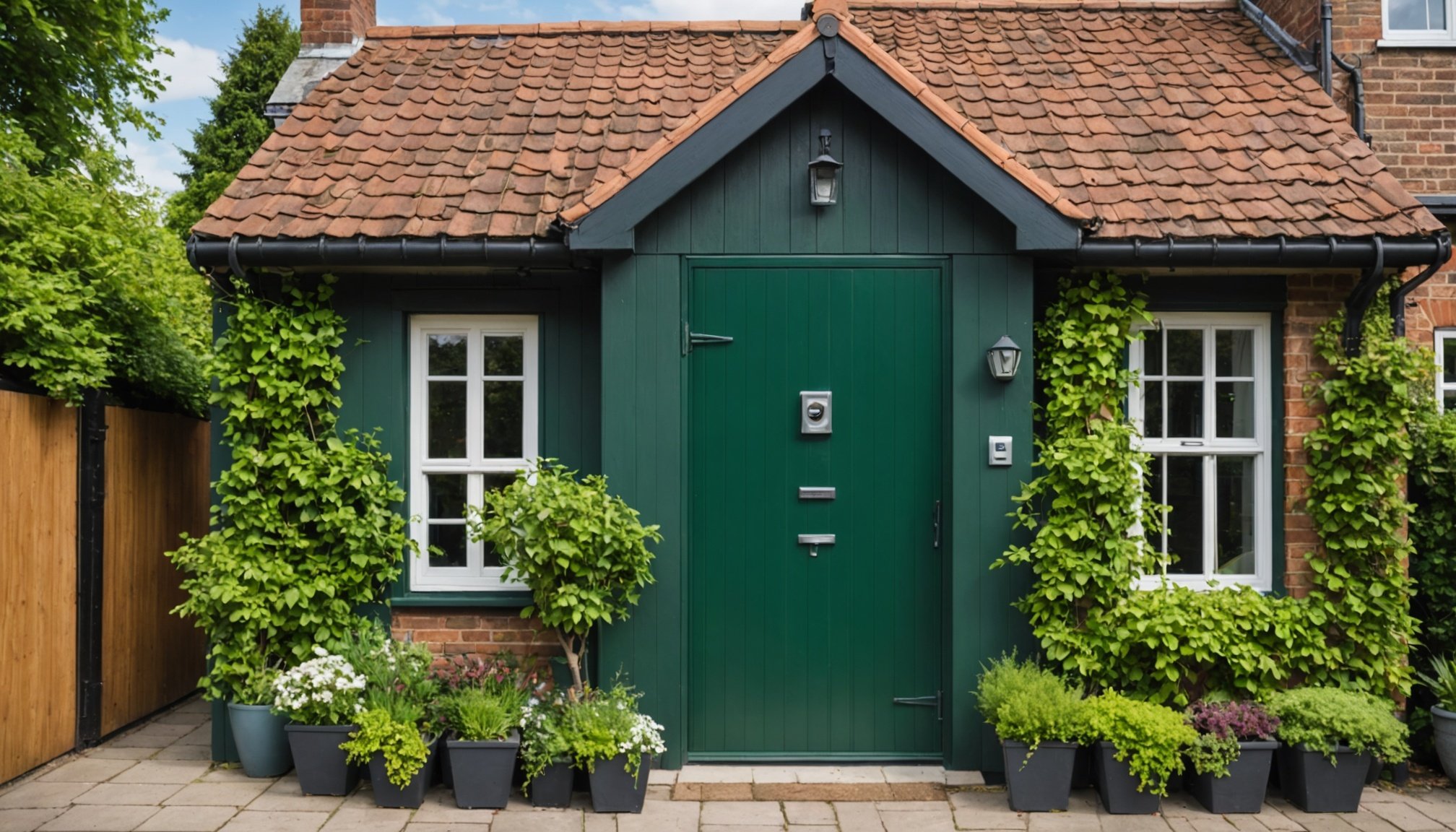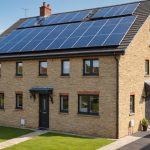The Green Homes Grant offers UK homeowners an exciting opportunity to enhance energy efficiency while reducing carbon footprints. With economic pressures looming, understanding how to unlock this funding is more important than ever. This guide provides essential insights into eligibility, application processes, and tips for maximising benefits. Discover how you can transform your home into a greener haven and contribute to a sustainable future. Embrace this chance to save money and create a lasting impact on our environment.
Overview of the Green Homes Grant
The Green Homes Grant is a pivotal initiative aimed at enhancing the energy efficiency of UK homes. Launched to support UK homeowners in reducing their carbon footprint, the scheme provides financial assistance for energy-efficient home improvements. The primary objective is to help homeowners install measures like insulation, heat pumps, and solar panels, thereby promoting a shift towards more sustainable living environments.
Lire également : Unlocking Compensation: A Guide for UK Residents Affected by Public Utility Disruptions
In 2023, key updates have been introduced to the Green Homes Grant, reflecting ongoing commitment to environmental goals. These updates include expanded eligibility criteria, allowing more UK homeowners to access the grant. Additionally, there is an increased focus on supporting low-income households, ensuring equitable access to energy efficiency upgrades. The grant now also covers a broader range of improvements, offering homeowners more flexibility in choosing the right solutions for their homes.
Energy efficiency is crucial not only for reducing household energy bills but also for contributing to the broader environmental impact. By improving home energy efficiency, the Green Homes Grant aids in lowering greenhouse gas emissions, aligning with the UK's commitment to achieving net-zero emissions by 2050. This initiative not only benefits individual homeowners but also plays a significant role in the national effort to combat climate change.
En parallèle : Ultimate Guide to Registering for the 2024 London Marathon as an International Runner
Eligibility Requirements for the Green Homes Grant
Understanding the eligibility criteria for the Green Homes Grant is essential for homeowners considering energy-efficient upgrades. The scheme is open to a broad range of applicants, but there are specific homeowner requirements to meet.
Who Can Apply
The grant is primarily available to residential property owners in the UK. Both owner-occupiers and private landlords can apply, provided they meet certain conditions. It's important to note that the scheme prioritises low-income households, offering them additional support.
Qualifying Properties
Not all properties are eligible for the grant. Qualifying properties include single-family homes, bungalows, and flats. However, newly built homes that have not been previously occupied are excluded from the scheme. This ensures that the focus remains on enhancing the energy efficiency of existing housing stock.
Specific Conditions and Exclusions
Applicants must adhere to specific conditions to qualify. The property must have a valid Energy Performance Certificate (EPC) rating, typically E, F, or G, indicating a need for energy efficiency improvements. Exclusions apply to properties with a high EPC rating or those already benefiting from similar government schemes. Understanding these requirements can help homeowners determine their eligibility and maximise the benefits of the Green Homes Grant.
Step-by-Step Application Process
Applying for the Green Homes Grant involves a structured process designed to ensure applicants provide all necessary information efficiently. Understanding the application process can help streamline your efforts and increase the likelihood of approval.
How to Apply
To begin, homeowners should visit the official government website to access the grant application form. It's crucial to fill out this form accurately, providing detailed information about your property and planned energy-efficient improvements.
Required Documentation and Information
Applicants must prepare several documents before starting the application process. These include proof of property ownership, a valid Energy Performance Certificate (EPC), and quotes from accredited installers for the desired home improvements. Ensuring these documents are complete and up-to-date will facilitate a smoother application.
Common Mistakes to Avoid
Avoiding errors is key to a successful grant application. Common pitfalls include submitting incomplete forms, providing incorrect property details, or failing to include necessary documentation. Double-check all information before submission to prevent delays or rejections. By understanding the application process and preparing thoroughly, homeowners can enhance their chances of securing the Green Homes Grant effectively.
Types of Improvements Covered by the Grant
The Green Homes Grant offers a wide array of home improvements aimed at enhancing energy efficiency. Homeowners can benefit from grant coverage that includes several key energy upgrades.
Overview of Eligible Improvements and Installations
The grant supports the installation of insulation in walls, roofs, and floors, which is crucial for reducing heat loss and lowering energy bills. It also covers the installation of heat pumps, both air source and ground source, which are efficient alternatives to traditional heating systems. Solar panels are another eligible improvement, allowing homeowners to harness renewable energy and reduce reliance on fossil fuels.
Energy Efficiency Measures Supported by the Grant
Beyond these installations, the grant encourages the adoption of energy efficiency measures such as draught-proofing and double glazing. These measures further enhance a home's thermal performance, contributing to significant energy savings. Water-efficient fixtures, like low-flow taps and showerheads, are also supported, promoting water conservation alongside energy efficiency.
Additional Incentives for Specific Upgrades
Certain energy upgrades may qualify for additional incentives under the grant. For example, incorporating smart thermostats can enhance the efficiency of heating systems, offering greater control and energy savings. By selecting the right combination of improvements, homeowners can maximise the benefits of the Green Homes Grant, making their homes more sustainable and cost-effective.
Maximizing the Value of the Green Homes Grant
In order to truly harness the grant benefits, homeowners must strategically approach their home improvements. The financial incentives provided by the Green Homes Grant can significantly lower the cost of energy-efficient upgrades, leading to substantial long-term savings on energy bills.
Financial Benefits and Savings Potential
The grant covers a significant portion of installation costs for eligible improvements, which can drastically reduce initial out-of-pocket expenses. By investing in energy-efficient solutions like insulation and heat pumps, homeowners can enjoy reduced energy consumption and lower utility bills over time. These financial incentives not only make upgrades more affordable but also enhance property value.
Case Studies and Testimonials
Consider the experience of a homeowner in Manchester who utilised the grant to install solar panels and wall insulation. This investment led to a 30% reduction in their annual energy bills, showcasing the potential savings. Testimonials like these underscore the tangible benefits of leveraging the grant benefits effectively.
Tips for Homeowners
To maximise the value of the grant, homeowners should:
- Prioritise improvements with the highest energy savings potential.
- Seek quotes from multiple accredited installers to ensure competitive pricing.
- Regularly review energy bills to track savings and adjust usage accordingly.
By following these homeowner tips, individuals can fully leverage the Green Homes Grant to create more sustainable and cost-effective homes.











